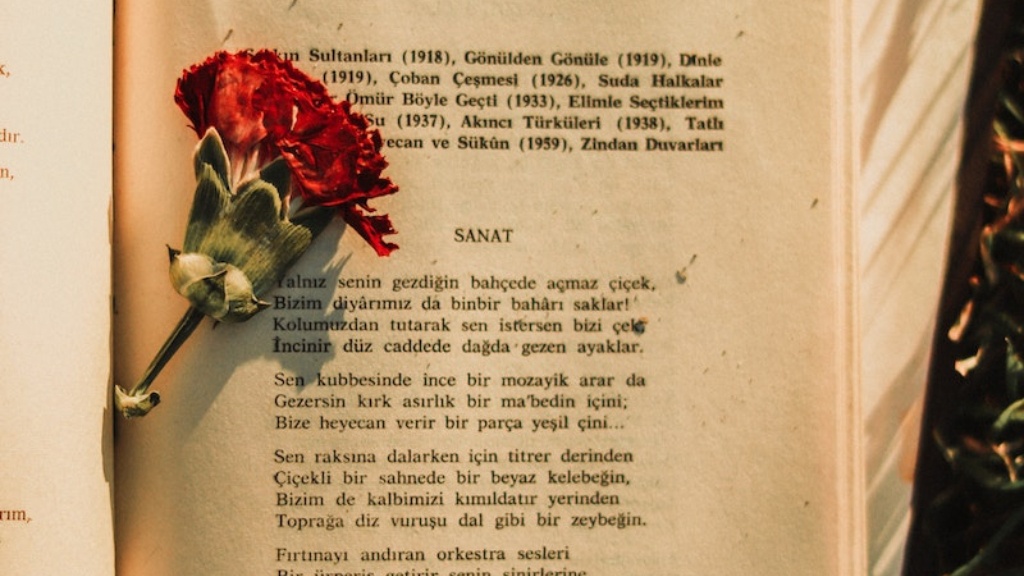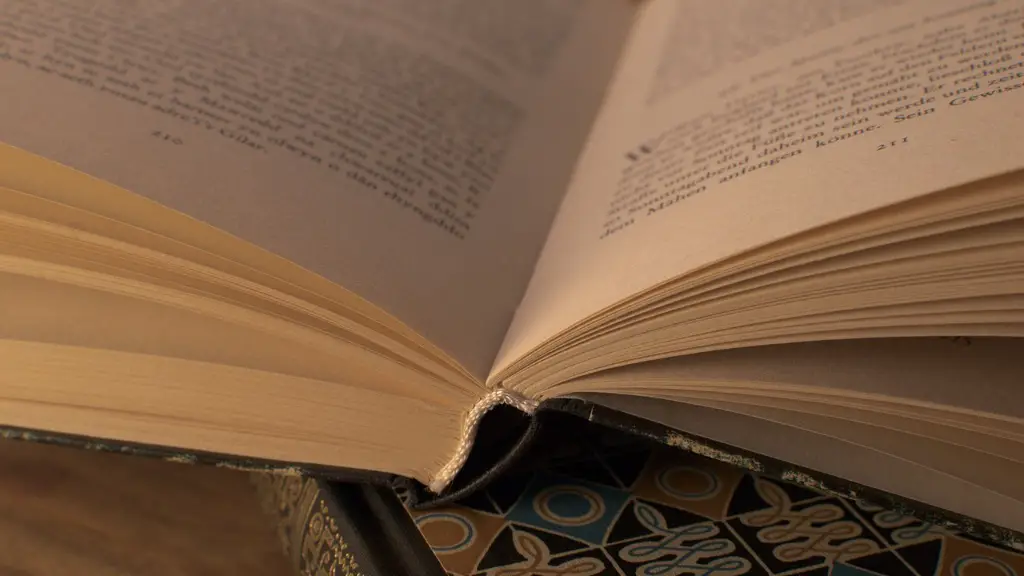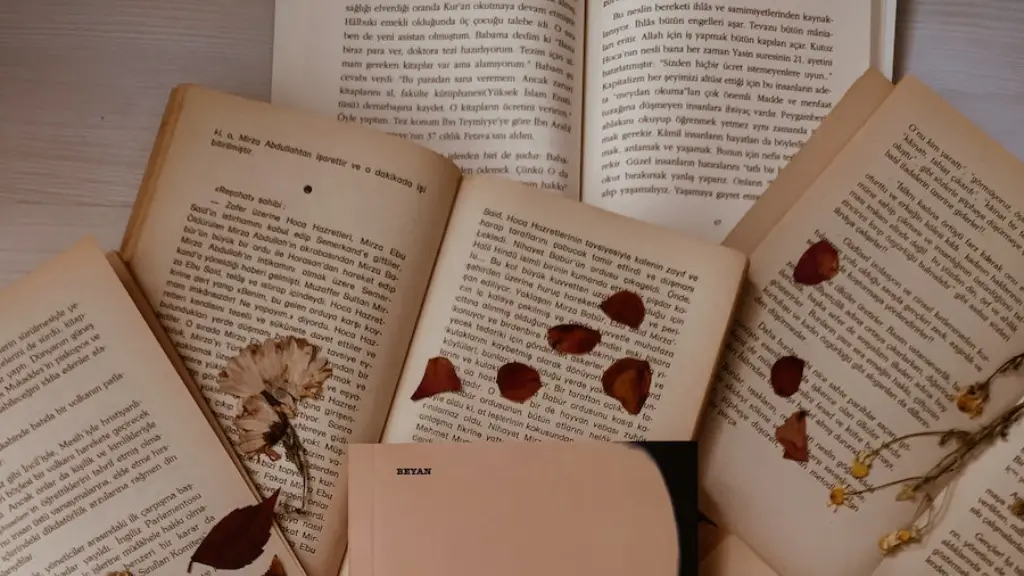Part 1: Basics of Citing Poetry in MLA
Citing poetry in the Modern Language Association (MLA) style can be tricky, but there are some guidelines that can help you understand the process. When citing a poem, it is important to include the poem’s author, title, and publication information in your citation. It can also be helpful to include the context of the quote and the line number of the cited poem. Ultimately, the goal of citing poetry in MLA is to make sure you are giving credit to the poem’s author.
When citing a single line of a poem, use quotation marks and the line number in the in-text citation. If you are citing a specific line of a poem, the line number should be placed in parentheses after the quoted material. For example, if you are citing a line from a poem by Robert Frost, the in-text citation might look like this: “Two roads diverged in a yellow wood”(Frost 6).
If you are citing more than one line from the poem in your text, MLA requires you to use a slash (/) to separate each line. For example, if you are citing two lines from a poem by Emily Dickinson, the in-text citation might look like this: “I shook and shook the silence sorer—/ And again there stirs the air” (Dickinson 258-59).
In the Works Cited page, it is important to include the full title of the poem, the author’s name, the year of publication, and the URL or publisher’s name if available. It also useful to include a brief note about the form of the poem, such as identifying it as a sonnet or haiku. The following example of an MLA citation for a poem might look like this:
Frost, Robert. “The Road Not Taken”. Robert Frost: Poems, Henry Holt and Company, 1920, www.poetryfoundation.org/poems/43798/the-road-not-taken.
Part 2: Syntax Rules for Citing Poetry in MLA
When citing poetry in MLA style, it’s important to pay attention to the syntax in your citations. In general, the MLA guidelines recommend formatting the citation as it would appear in the source text. This means, for example, that all lines of the poem should be cited in the same way, regardless of how the text appears in the source.
For example, if a poem has a quotation mark at the beginning of each line, the in-text citation should include the quotation mark. On the other hand, if the poem does not have quotation marks, the in-text citation should not include quotation marks. If the poem has lines that are split across two pages, the parentheses should contain both page numbers, with a hyphen in between.
The format of the in-text citation should also reflect the format of the poem. For example, if the poem is written in free verse, the syntax of the citation should follow the syntax of the poem. This means the citation might not match MLA’s standard syntax, though it should still include the necessary information.
It is important to remember that the syntax of a poem’s citation should be consistent with the syntax used in the actual poem. If the poem is written in metered verse, the syntax of the citation should follow the syntax of the poem’s meter. In this case, the citation might differ from MLA’s standard syntax, as it should reflect the specific meter of the poem.
Part 3: Common Mistakes to Avoid
When citing a poem in MLA style, there are some common mistakes to avoid. For example, while quoting a poem it is important to make sure that the poem’s line numbers also appear in your in-text citation. These should be placed in parentheses after the quoted material.
Another common mistake is failing to include the poem’s author. This should be included in both the in-text citation and the Works Cited page. It is also important to remember that the poem’s title should always be italicized. If it is not present in the text, it should be included in the in-text citation.
Another common mistake is failing to include the publication information for the poem. This should include the name of the poem’s publisher, as well as the year of publication. It is also important to include the poem’s URL or publisher’s name if available.
Finally, it is important to use consistent syntax when citing a poem. This means that all of the lines of the poem should be cited in the same way, regardless of how they appear in the source text. It is also important to remember that the format of the in-text citation should reflect the format of the poem.
Part 4: Tips for Citing Poetry in MLA
When citing a poem in MLA, there are some tips to keep in mind that may help the process run more smoothly. For example, it can be helpful to use a thesaurus to make sure that the words you use for the in-text citation accurately describe the words in the poem. This will help you ensure that you are accurately representing the poem, and giving the author proper credit.
It can also be helpful to create a Works Cited page as you go, rather than waiting until the end of the writing process. This will help ensure that all of the necessary information for each poem is included in the citation. It is also important to remember to use the most up-to-date version of the MLA style. This will help ensure that you are following the most accurate guidelines.
Finally, it is important to proofread all citations to make sure they are formatted correctly. This includes checking to make sure that all punctuation is correct, and that all lines of the poem are cited correctly and accurately. Doing this before submitting your work will help ensure that all of your citations are correct and accurate.
Part 5: Different Types of Poetry
When citing poetry in MLA, it is important to remember that there are different types of poetry, and each type may require different formatting. For example, sonnets typically use traditional line numbers, and these should be included in the in-text citation. This would look like this: “Shall I compare thee to a summer’s day?(1-2).
On the other hand, free verse poetry does not use traditional line numbers, and the in-text citation should instead refer to the page number(s) and paragraph number(s). This would look like this: “The oranges are filled with juice” (Bradbury 16-18, par. 2).
When citing other types of poetry, such as ghazals, odes, and haikus, it is important to include both the line numbers and the page numbers in the in-text citation, as well as a brief note about the form of the poem. For example, if you are citing a haiku, you should include the line numbers, page numbers, and the fact that it is a haiku in your in-text citation. This would look like this: “A gentle wind rustles the leaves (Senbazuru 1-3, Haiku).
Part 6: Examples of In-text Citations
When citing poetry in MLA style, it is important to understand the different types of in-text citations. Here are some examples of how to cite different types of poems in-text:
For a Verse Play:
“Come, gentle Night; Come, loving, black-brow’d Night” (Shakespeare 1.1.128-129).
For a Long Poem:
“I fled Him, down the nights and down the days” (Hopkins 11-13).
For a Stanza:
“Our love it was stronger by far than the love/ Of those who were older than we—/ Of many far wiser than we” (Wilde 27-29).
For a Quatrain:
“Like the stars that blanket the night sky/ They danced around the flame of love./ All we had was a single night/ Before morning stole the stars above” (Sanchez 14-17).
For a Couplet:
“Our hearts were beating ever so fast/ While dancing in the moonlit garden” (Alvarez 34-35).
Part 7: Examples of MLA Citations
When citing a poem in MLA style, it is important to understand the different types of citations. Here are some examples of how to cite different types of poems in the Works Cited page:
For a Verse Play:
Shakespeare, William. A Midsummer Night’s Dream. Ed. Roy Battenhouse. Norton Critical Edition, W.W. Norton & Company, Inc., 1977.
For a Long Poem:
Hopkins, Gerard Manley. “God’s Grandeur”. Poetry Foundation, www.poetryfoundation.org/poems/45322/gods-grandeur.
For a Stanza:
Wilde, Oscar. “The Ballad of Reading Gaol”. The Complete Poems of Oscar Wilde, Wordsworth Poetry Library, 1997.
For a Quatrain:
Sanchez, Carmen. “The Night”. The Best American Poetry, 2019, www.thebestamericanpoetry.com/features/the-night-carmen-sanchez.
For a Couplet:
Alvarez, Mariana. “Dancing in the Moonlight”. The Sun and Her Flowers, Andrews McMeel Publishing, 2017.
Part 8: Citing Quotes by Unknown Authors
When citing a poem by an unknown author, MLA recommends citing the work as “Anonymous.” For example, if you are citing a poem by an anonymous author, the in-text citation should look like this:“Though she be but little, she is fierce.” (Anonymous 8).
In the Works Cited page, the citation should include the poem’s title, as well as the source (e.g. a website or anthology):
Anonymous. “Though She Be But Little, She Is Fierce.” The Poetry Foundation, www.poetryfoundation.org/poems/52975/though-she-be-but-little-she-is-fierce.
It can also be helpful to include the date of the poem’s publication or the date it was added to the website if available. The date can be found in the “About” section of the website or the publication information in the back of the book.
Part 9: Using Poetry to Enrich Your Writing
Citing poetry in MLA can provide a great opportunity to enliven and enrich your writing. By citing a poem, you can add a unique perspective to your argument or narrative, as well as add depth and beauty to your writing.
When using poetry to enrich your writing, it is important to make sure that the cited poem is appropriate for the work. For example, if you are writing a research paper on a serious subject, it may not be appropriate to include a humorous poem. It is also important to consider the tone and the emotion of the poem, and to make sure that it fits with the tone of the work.
Citing relevant poems can also help to support and strengthen your argument. For example, if you are writing a paper about the power of love and you cite a poem about heartbreak, it can help to emphasize your point and add uniqueness to your work.
Ultimately, citing poetry can add a special touch to any piece of writing. By taking the time to find the right poem and citing it accurately, you can create a work of art that will captivate audiences and leave a lasting impression.
Part 10: Summary
Citing poetry in MLA style can be a tricky process, but the guidelines outlined in this article will help you understand the fundamentals of citing poetry correctly. When citing a poem, it is important to include the poem’s author, title, and publication information in your citation. It


